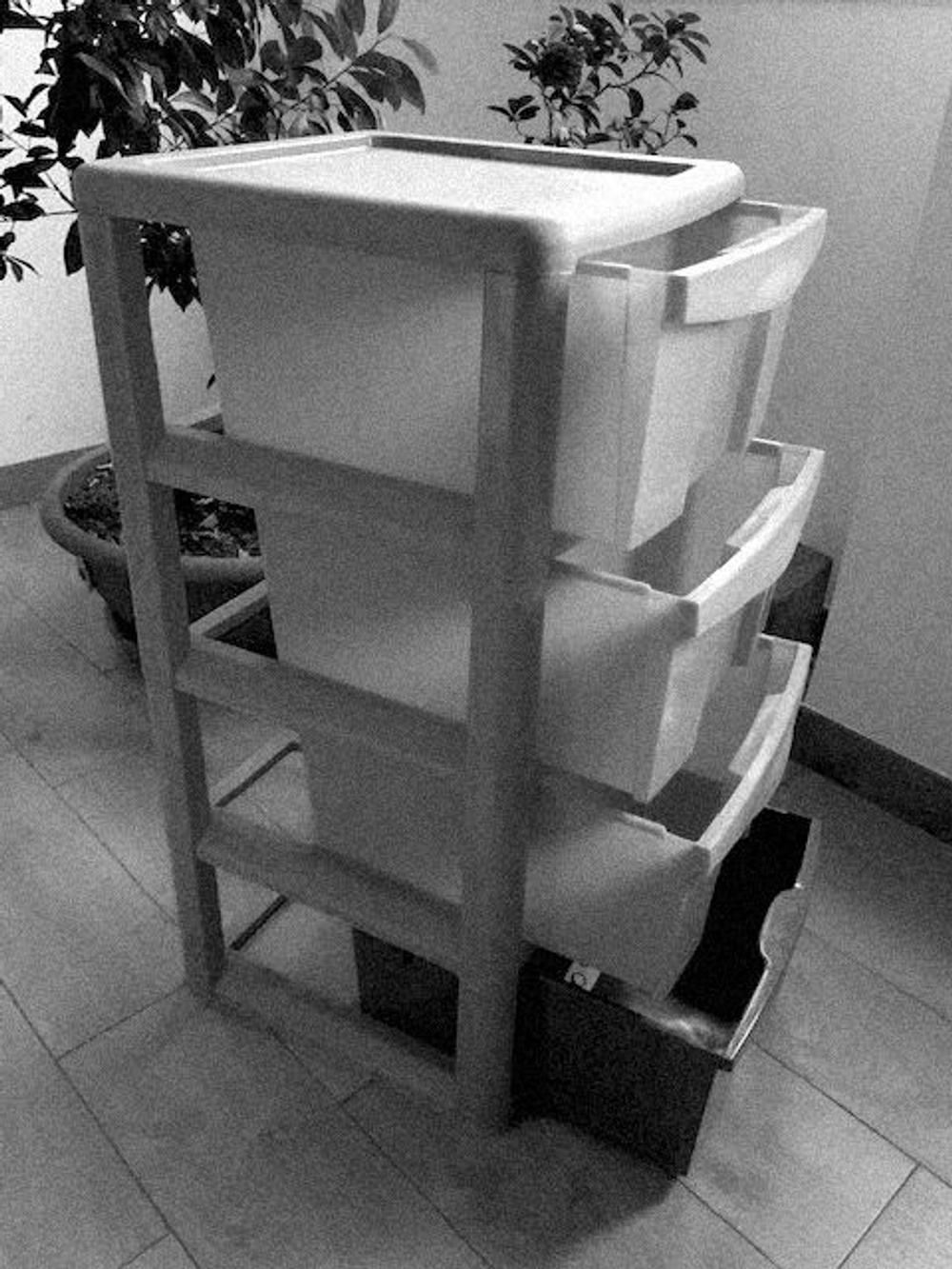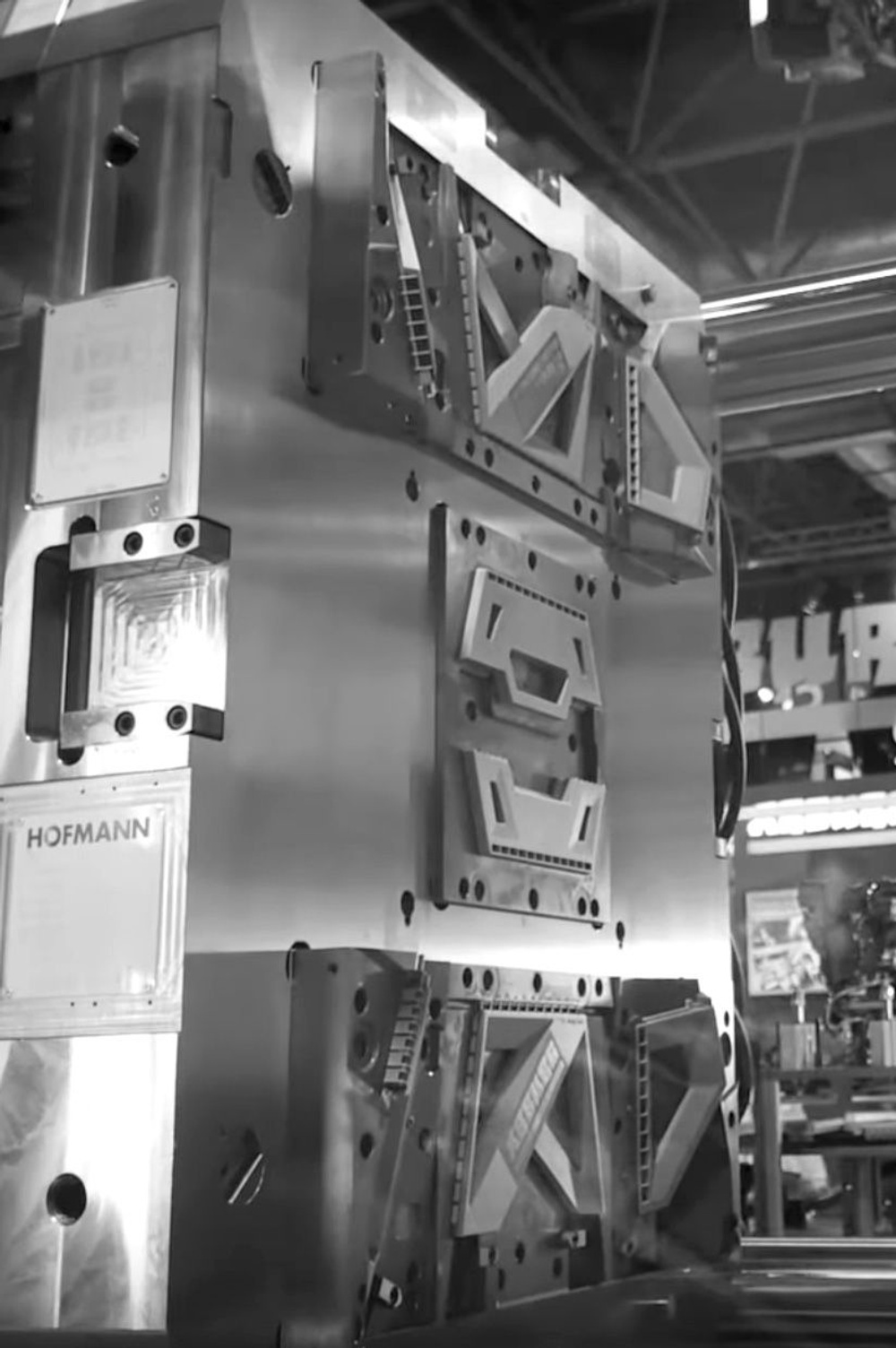The need to involve all the key people right from concept development was born working with our first clients. It comes from a failure experienced on our skin.
The story began with a meeting at a trade fair. The entrepreneur we met was in the plastic housewares industry. He challenged us in making a plastic chest of drawers with a single mold (when writing, the current manufacturing process feature three different molds for injection).
The task was to find an innovative solution to reduce the employed molds from three to just one. The assignment was not simple at all. The standard production method was putting out economic and robust products with minimum material. So, changing a perfectly engineered process also used by big competitors was risky.
Without too much thinking, we accepted the challenge and started putting our effort into researching a proper technology. We discovered one which allowed producing two similar shapes using a single mold (family molding).
Eureka! Discovering that manufacturing process gave us a chance.
We could redesign the product using just one mold to produce two different but similar geometries, as our brief stated. Through 3D models and renders, we managed to create a neat presentation to show the idea to the company.
Bingo! The entrepreneur was amazed by the result and asked us to develop the project. Now we got in the troublesome work. A rapid development process begins to bring the design to market.
The entrepreneur lists a series of problems that we had not considered in the concept phase. A weight limit for the object, a maximum thickness, warehouse and shipping constraints, cost control.
In the concept phase, we worked alone, without involving any technician in the process. But now we had to implement a bunch of new solutions. So involved in the product development process the entrepreneur and a technician of the company.
We together redesigned our concept, through numerous iterations, to overcoming all the constraints to bring the idea to life. Through endless modifications, we managed to have a manufacturable concept. We got to a point where the shape was almost unchangeable. But difficulties weren’t over. Another one was just behind the corner. Missing from the project were inputs from the mold engineer and manufacturing supplier, who were superficially involved just by showing them renderings.
We sent them 3D models, and they sent us back no good news. First: we discover that the manufacturing constraints we followed weren’t by an engineer. The entrepreneur arranged them from his long experience in the field. No precise data from a technician was employed. Second: the mold was very complicated to operate, so the costs exceeded the budget.
Plastic mold-flow simulation showed that some areas failed to fill. It was due to thin wall-thicknesses.
What’s more, mold engineers suggested choosing a material with better flowing characteristics. We got to modify the 3D model to increase thickness. With new feedbacks, the design starts to get feasible.
In the mold, all the components got neatly filled. Inputs from key-manufacturing people were fundamental to achieve feasibility.
But there was one constraint we couldn’t overcome: the mold price. Given the manufacturing process complexity, the designed mold was a very costly solution for our client. So our design didn’t manage to get on the market, existing only as a prototype.
Often, however, it is from failures you learn the best lessons. We learned that all key-professionals must work together right from the start to achieve successful innovation. Everyone coordinated towards the same goal.
This way, the solution will involve inputs from every professional in research and development. You get a comprehensive design innovation facing reality from the start, not wasting time and resources. A good product is a reflection of a neat process.




